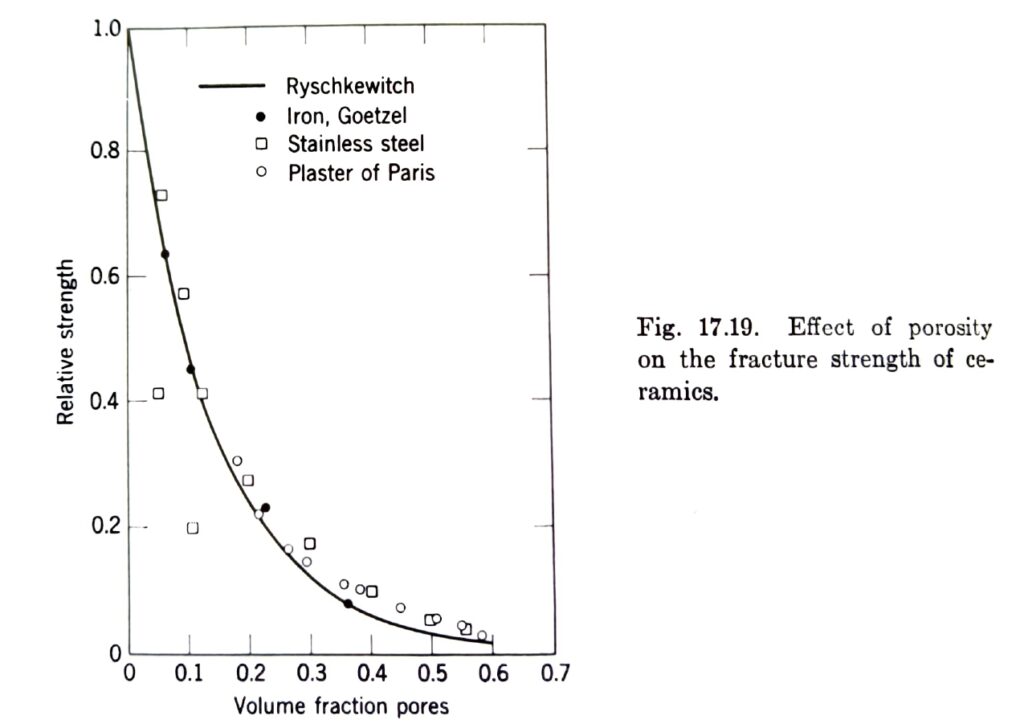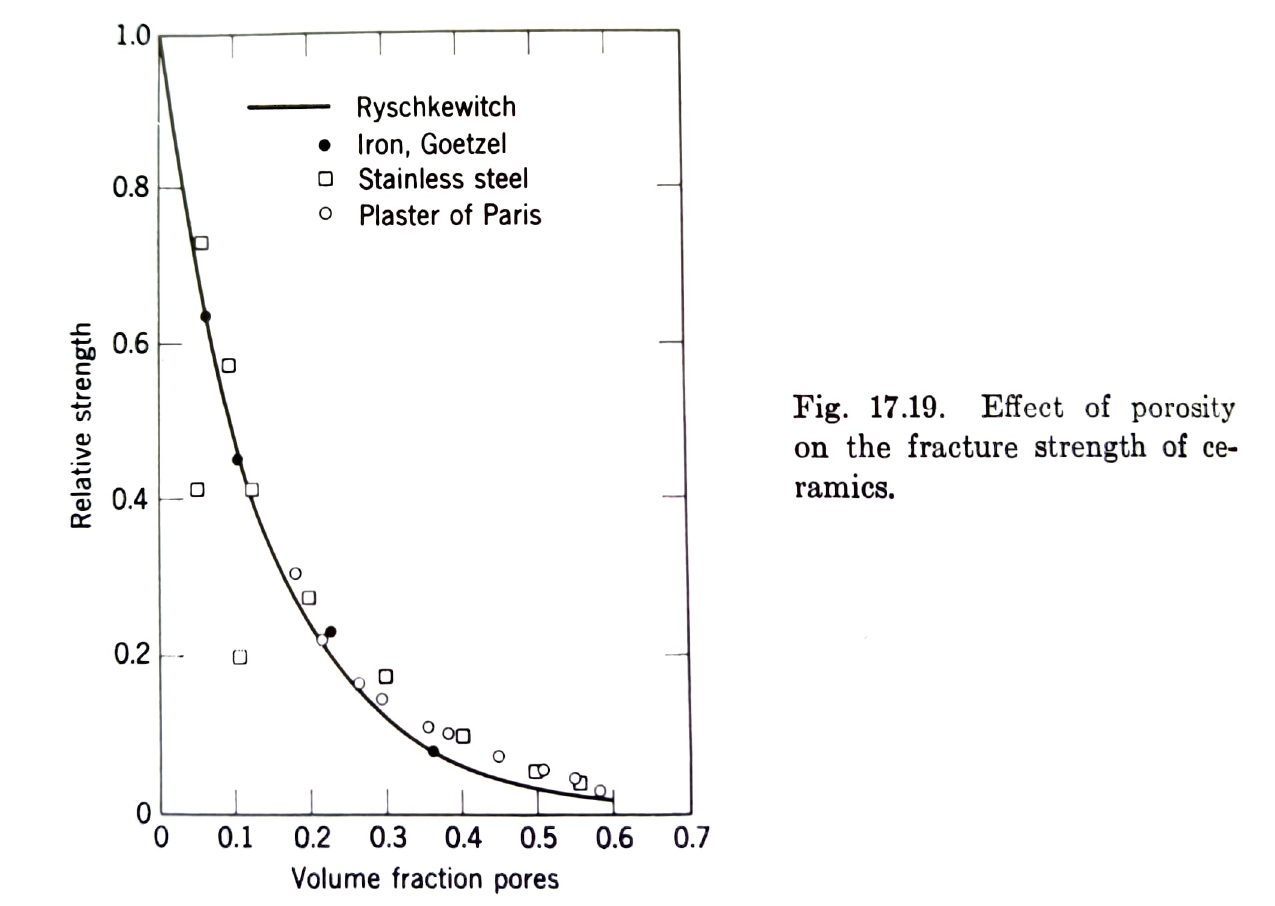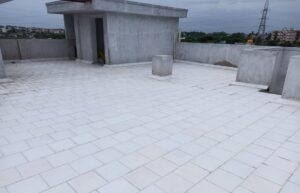What is Porosity?
Porosity is the percentage of space within a material. Porosity is determined by dividing the volume of voids by the total volume of a material to determine a percentage.
Measurement of Porosity by water absorption:
Water absorption measures how much moisture a specific tile/ceramic is likely to absorb. Porosity is directly proportional to water absorption. It is measured by dividing the volume of water that can be absorbed by the material by the total volume of that material
Effects of Porosity on Ceramics:
Strength:
The major effect on the microstructure in most ceramics porosity. Pores decrease the cross-sectional area on which the load is applied but also act as stress concentrators. For an isolated spherical pore the stress is increased by the factor of 2.Experimentally it is found that the strength of porous ceramics is decreased in a way that is nearly exponential with porosity. That is to say, the strength is decreased to a value of half that observed for the pore free material with about 10% porosity. This amount of porosity is not uncommon. Hard porcelain has porosity of about 3% while earthenware has a porosity of 10% to 15%. This difference in porosity is responsible for the major part of the order of magnitude difference in their strength. High strength is always a desirable feature.
Other effects of porosity on glazed ceramic ware can be stress and moisture expansion.

Stress Crazing:
A glazed ceramic / tile with higher porosity will have a low strength. When these materials are exposed to external stresses like bonding with cement and adhesives the tiles have high probability to craze (i.e cracking of top glazed layer.). Like all brittle materials all ceramics (especially silicate ceramics) including the glaze, work better in compression and are weak under tension. Since the body is thicker and stronger than the glaze, the glaze starts cracking since it is exposed to tension. This type of crazing is called stress crazing and is usually observed as parallel cracks and so it is also called parallel crazing.
Moisture crazing:
A glazed ceramic / tile with higher porosity will tend to absorption more moisture. This cyclical phenomena of absorption and evaporation of moisture from the ceramic / tile leads to expansion to the ceramic ware. This in turn will induce crazing. This type of crazing is called moisture crazing.



